How field trips are more than just geological sight seeing
Field work is not only essential for collecting samples that we can later analyse in the lab. The understanding of the geological context of our samples is what sets geologists apart from being an analytical chemist or physicist. During my studies I tried to attend as many field trips as I possibly could. And by bringing together and having to combine and transfer all the knowledge and skills I obtained in lectures and practicals, they fostered and consolidated my understanding of geology. That is why field trips are such an important part of a university geoscience degree course. But I felt there always was another aspect of field trips (which I also found during field work I did later): there was an aspect of cultural exchange that I really liked. The best example in my short “career” was probably Turkey, which I visited for a series of university field trips, field work for my undergraduate project and conference attendances. If one goes to Turkey for holiday, one either spends the entire time in a beach hotel, sheltered from any contact with Turkey or alternatively books a hotel or backpackers hostel in a major city (worst case: Antalya, but more of that later). The most obvious reason for that is: most visitors don’t speak Turkish and most people living in the smaller towns, let alone the villages, don’t speak anything but Turkish. So, I was extremely lucky to be able to go on a university field trip to Turkey towards the end of my undergraduate degree and come along for a second one as demonstrator. And here are some impressions I would like to share:
The trip was organised for students of the University of Mainz, Germany, by Dr Dejan Prelevic and his Turkish colleague and friend Dr Cüneyt Akal of the University of Izmir. And here we have one of the essential ingredients for a successful trip through a country of which you don’t speak the language: a dedicated, knowledgeable and hospitable local guide. He would ask locals for direction, help students and lecturers order food in the bakeries and restaurants, stand next to the reception desk when the hotel bills were to be sorted out and, maybe the most lasting impression, would teach us Turkish numbers and a few essential words that made you feel at least somewhat self reliant.
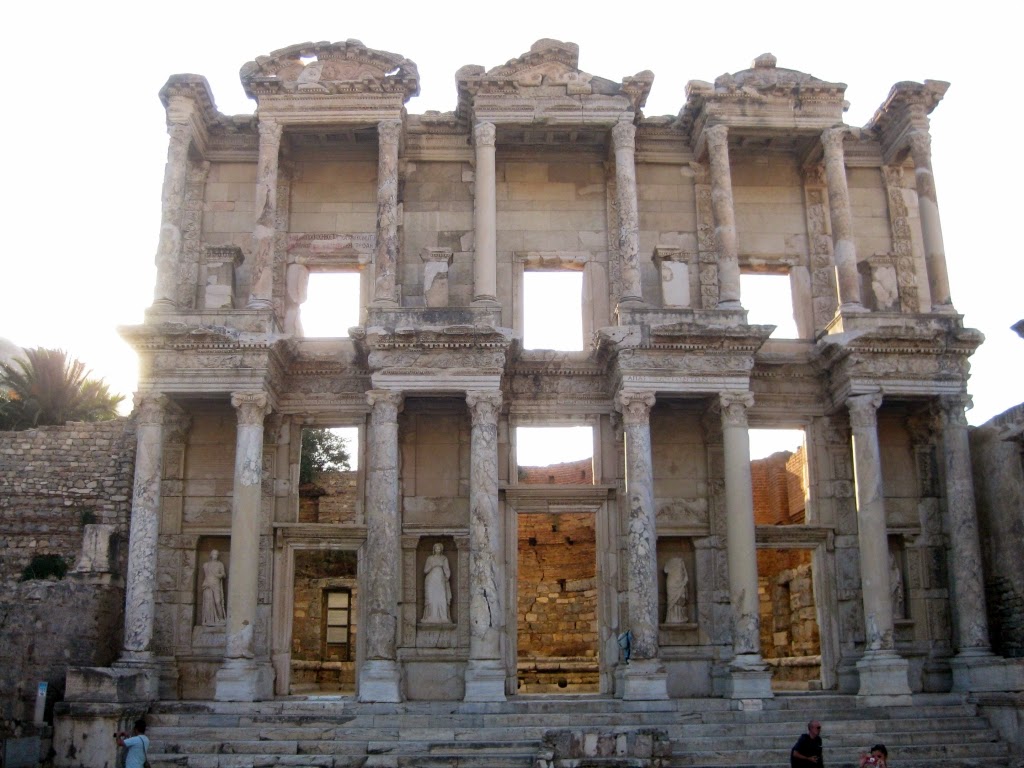 |
| The library of Ephesus |
The field trip started in Izmir, but immediately set off to visit the Menderes massif, not without visiting the ruins of Ephesos. This ancient city was situated right by the coast during the classical age, but due to sedimentation, climate change and tectonic movements it lies now several kilometres inland. The Menderes massif is a core complex bound by low angle detachment faults and comprises a core series of medium to high grade metamorphic rocks that are surrounded by a low grade (meta)sedimentary cover series. We looked at the detachment surface and the resulting cataclasites, high grade augengneisses in the core and low grade metasediments in the cover series. Extension exposed migmatites and eclogites in the core of the massif and facilitated the emplacement of lamprophyre sills into the low grade metapsammites and extensional granites into the detachment.
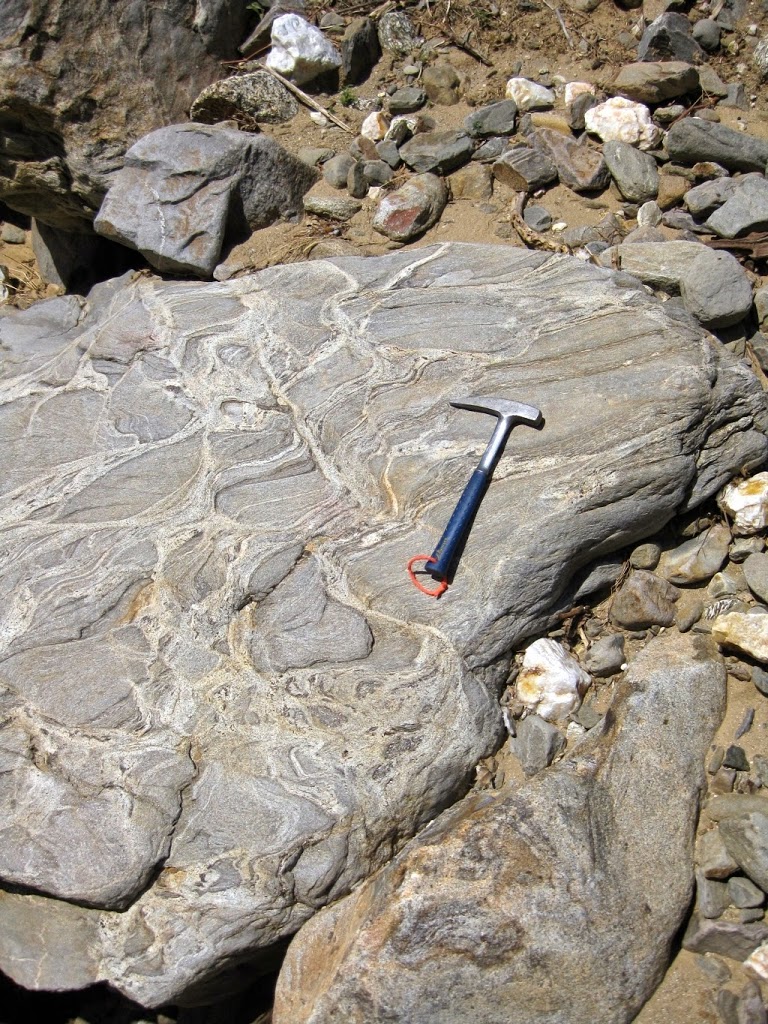 |
| Migmatites in Kiraz |
 |
| 15 Ma Lamprophyre sill showing “onion weathering”, intruded into metapsammites of the cover series of the Menderes massif. |
We then left the Menderes massif and continued to the area around Kula to look at quaternary volcanism. Some of the cinder cones and Aa-lava flows look as if they erupted yesterday. In the proximity of a tiny village close to a to a cinder cone, after asking the village head for permission, we looked at a wall painting that I think might be the oldest geological sketch of mankind. It seems to show the eruption of the nearby cinder cone, including a lava flow, volcanic bombs and lava fountains and maybe even running people. In the local area, there are also footprints of humans and animals in volcanic ash beds, which were dated at 26000 BP.
 |
| Cinder cone and Aa-lava flow in the Kula volcanic province |
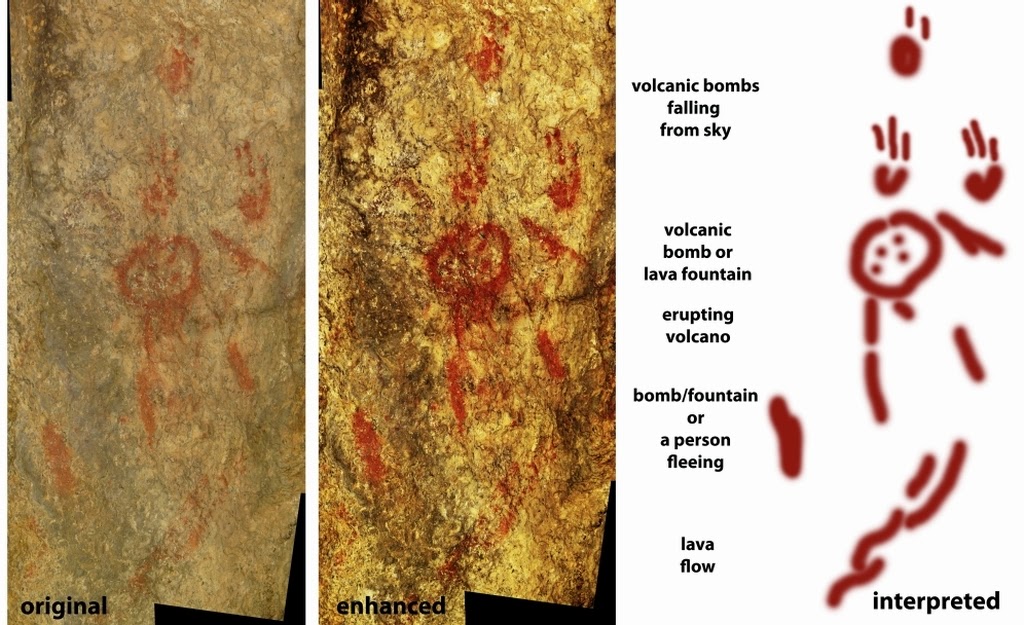 |
| World’s oldest geological sketch? |
In later years, the excursion then went to Tavsanli to look at the melange that among other bits of oceanic crust contains beautiful lawsonite blueschists. The first excursion however went immediately to Afyon. The city lies in a huge caldera, at 1000 masl and has its name “Opium” from the poppy fields around it. But most spectacular are the trachytic volcanic domes in the middle of the city, one of which is crowned by a fortress that requires to climb 800 steps to reach. Subsequent volcanic highlights included almost golf ball sized leucite crystals and two trachyte dykes that thanks to preferential erosion stick out of the rolling hills and illustrate in a textbook manner what a dyke actually looks like. The field trip then ended in the vicinity of Antalya, looking at a remarkably fresh ophiolitic sequence comprising mantle peridotite, pillow lavas and deep sea cherts.
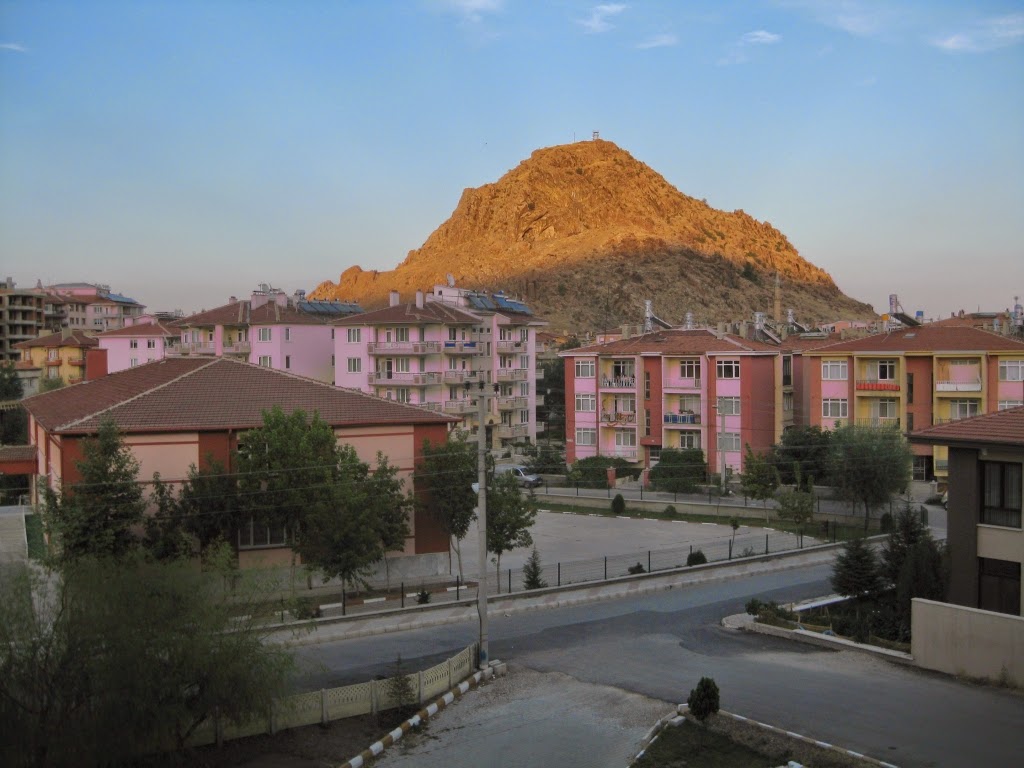 |
| Trachyte dome throning over the houses of Afyon |
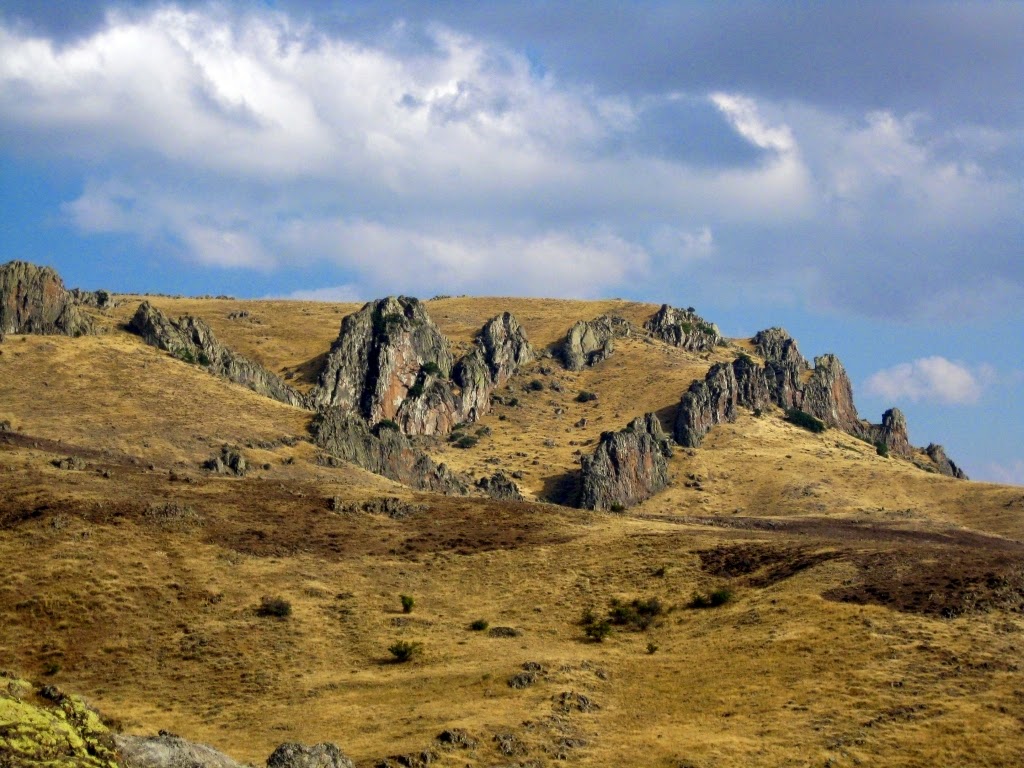 |
| Resistant trachyte dykes emerge from the landscape |
Turkey is great. It truly feels like the bridge to the east. In a lot of ways it is still fairly western (or a lot of western features were influenced by Turks in the past and present) but in many others it is excitingly different. Our field trips typically took place during Ramadan, the Turkish fasting period. In the evening, cannons would be fired to announce the breaking of the fast for the day – exciting for everybody fasting, but a bit intimidating for the unsuspecting European. By that time it is also impossible to get a seat in a restaurant – they are all flooded by people eager to eat. No wonder, despite the fasting even the elderly still work the fields in blazing sunshine and temperatures of 40 °C and more. But speaking of surprising sounds: at around 5 am the muezzin, or his recorded equivalent, shouts you out of bed. And you can be sure that there is a mosque close by. However, what appears annoying in fact adds to the oriental flavour. And so do all the small cafés (or kahvehanes) that we frequently stopped at to have cay (turkish black tea, served in a tulip shaped glass on a melamin “saucer”) or turk kahve (turkish coffee, veeeeery black in a tiny cup, with the grounds still swimming in it) – no Turkish day without tea of coffee. The food in the restaurants, regardless what people cook at home, is very meat based. Which is great for me, but the poor vegetarians basically ate Turkish flatbread with melted cheese for two weeks. And I have to admit, after 2 weeks of meat for lunch and dinner, even I wanted something vegetarian 🙂 But all these things are enjoyable experiences that expand ones cultural mindset. The real cultural shock is yet to follow: after being to all the small towns, away from the tourist magnets, and enjoying landscape, food and immensely friendly people one ends up in Antalya. Everybody speaks German (English as well, but German first) and tries to drag you into his or her shop and wants you to buy carpets, clothes or jewellery. And you pay three or four times what you paid just a day earlier in an Anatolian town. And this is the Turkey that a lot of tourists experience. But there is hope. After I’ve seen Istanbul and its cultural heritage of blue mosque, Hagia Sophia and the Topkapi palace, and have attended conferences in Izmir and Ankara, which are very different from the country side towns in having night clubs and bars and one can get by with English, I have the feeling these cities show the urban Turkish life. They are certainly not only designed to trick tourists.
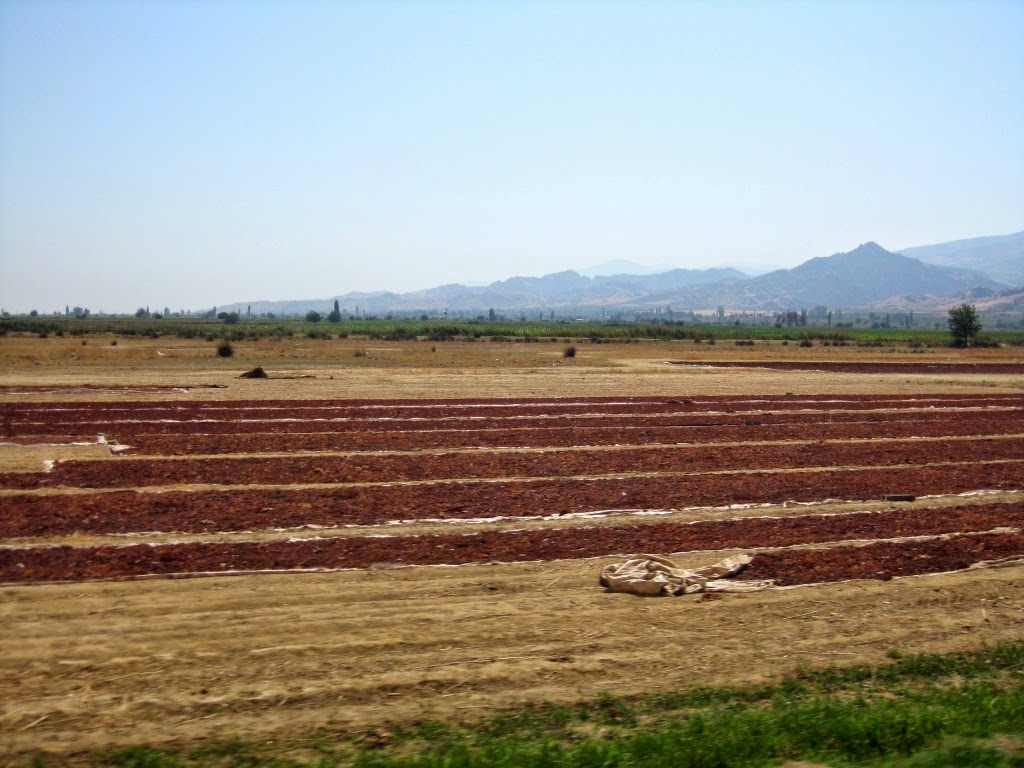 |
| Raisins in the making |
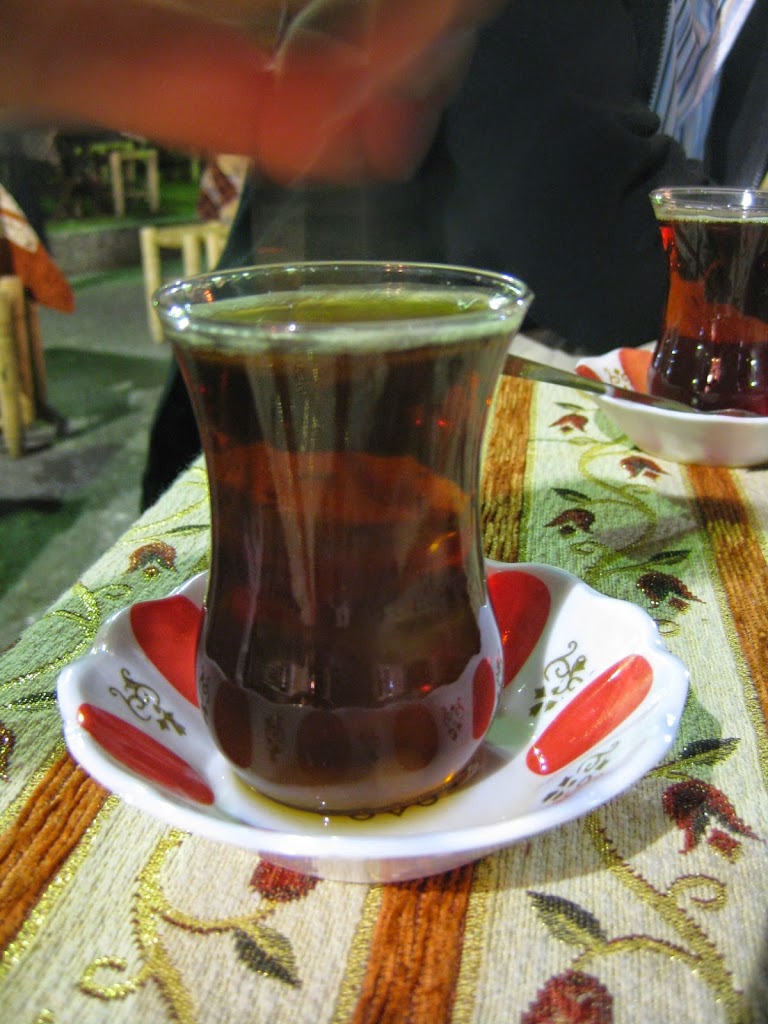 |
| Turkish Tea |
 |
| a tortoise |










![]() This work is licensed under a Creative Commons Attribution-NonCommercial-ShareAlike 4.0 International License.
This work is licensed under a Creative Commons Attribution-NonCommercial-ShareAlike 4.0 International License.